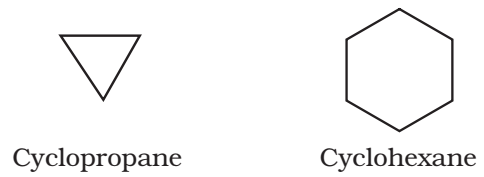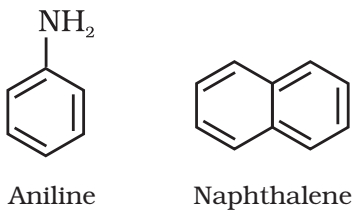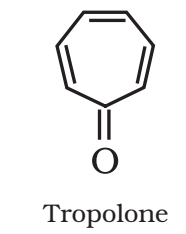

Acyclic or Open chain compounds:
These compounds are also called as aliphatic compounds and consist of straight or branched chain compounds, for example:

Closed or Cyclic Chain compounds:
Alicyclic or ring compounds:
Alicyclic (aliphatic cyclic) compounds contain carbon atoms joined in the form of a ring (homocyclic). Sometimes atoms other than carbon are also present in the ring (heterocylic).

Aromatic compounds:
These have a cyclic system containing at least one benzene ring. Benzene can be represented by any of the following structures:

Benzenoid aromatic compounds:
Bicyclic and tricyclic compounds also belong to this category.

Non-Benzenoid aromatic compounds:
These are some compounds which show aromaticity but donot contain any benzene ring. These are called non-benzenoid. For example:

Heterocyclic aromatic compounds:
In these compounds, the ring contains one or more atoms of either nitrogen, oxygen or sulphur in addition to carbon atoms. the atoms other than carbon (such as N, O, S) present in the ring is called hetero atom. For example,

Functional groups:
A functional group may be defined as an atom or a group of atoms present in a molecule which largely determines the chemical properties.

Homologous Series
A group or a series of organic compounds each containing a characteristic functional group forms a homologous series and the members of the series are called homologues. E.g., The homologous series of alkene group is

The general characteristics of this series are:
- All the homologues contain same functional group. That’s why their chemical properties are almost similar.
- All the members of a series have same general formula, e.g.,

- All the members can be prepared by almost similar methods.
- With the increase in the molecular weight of a series, the physical properties varies gradually.

